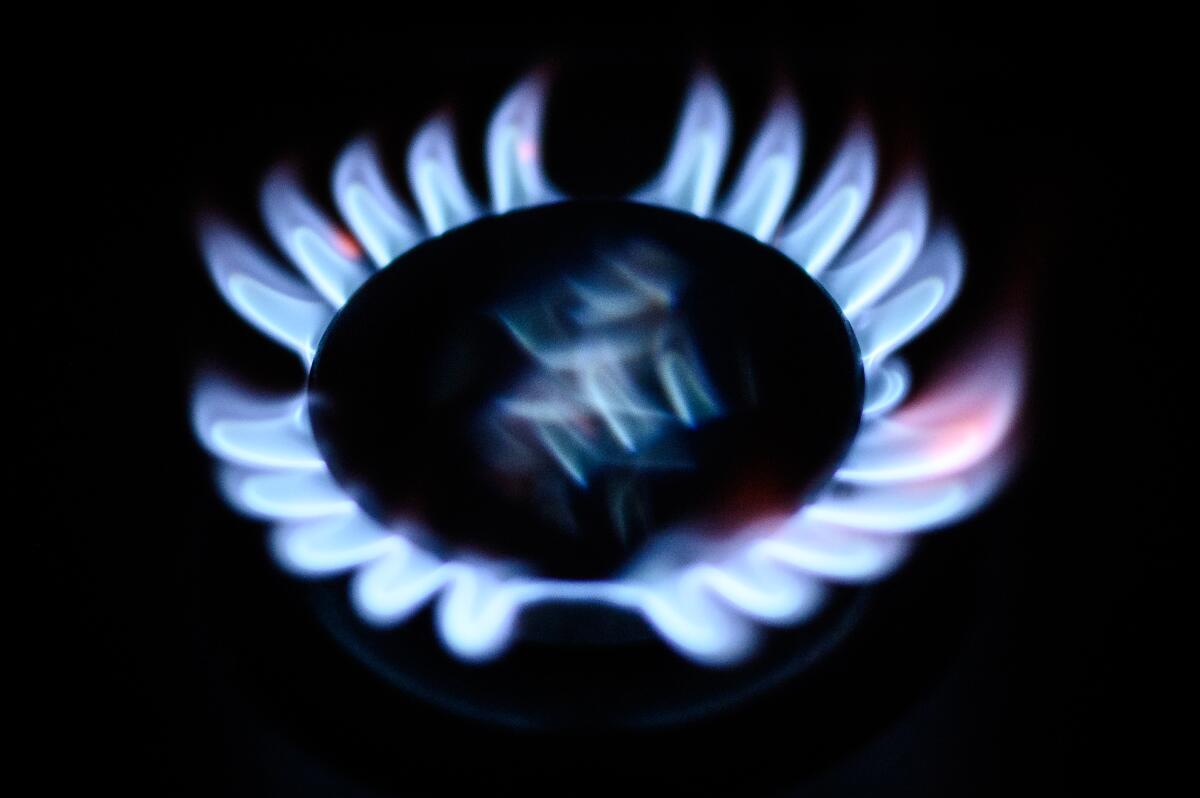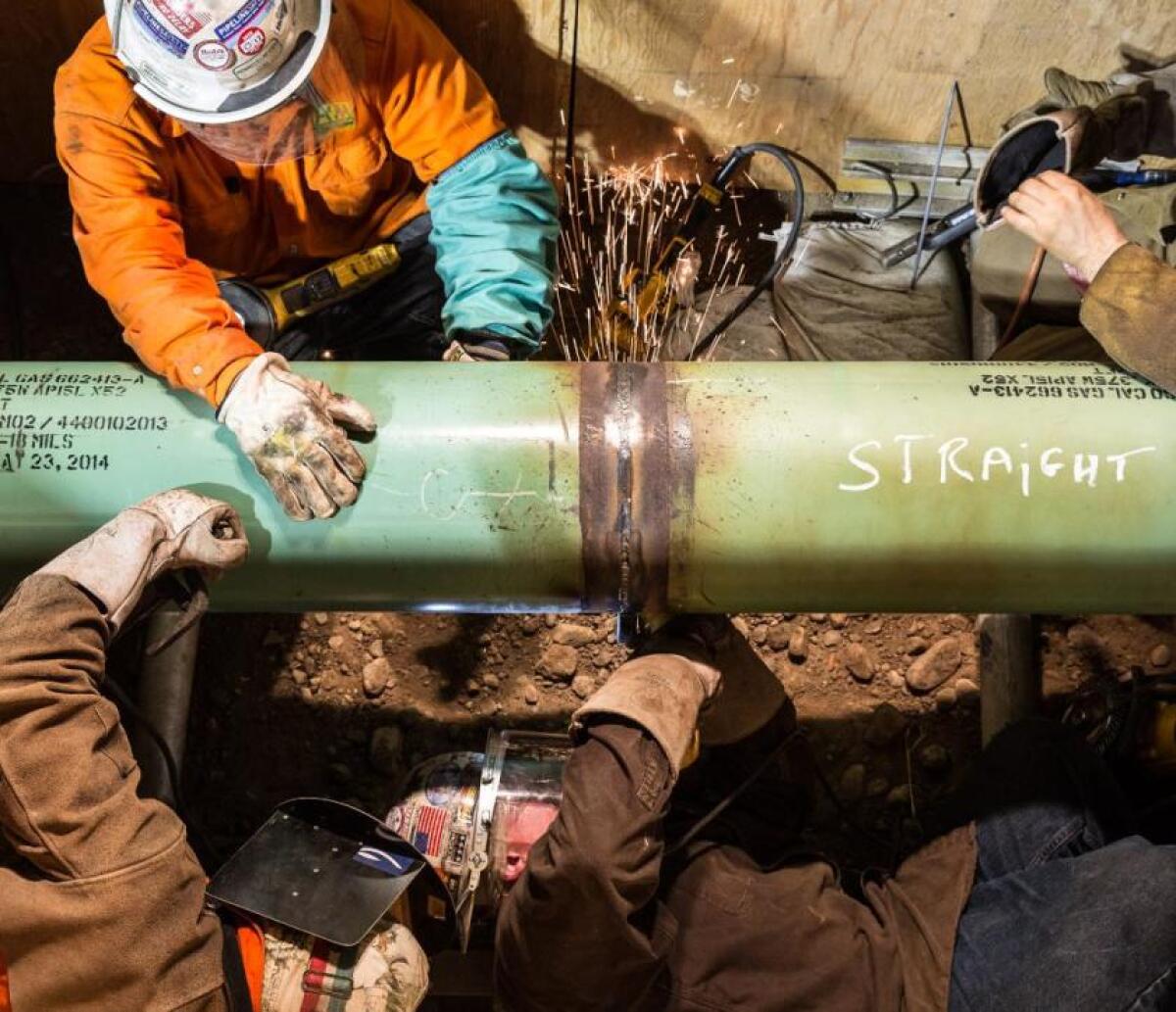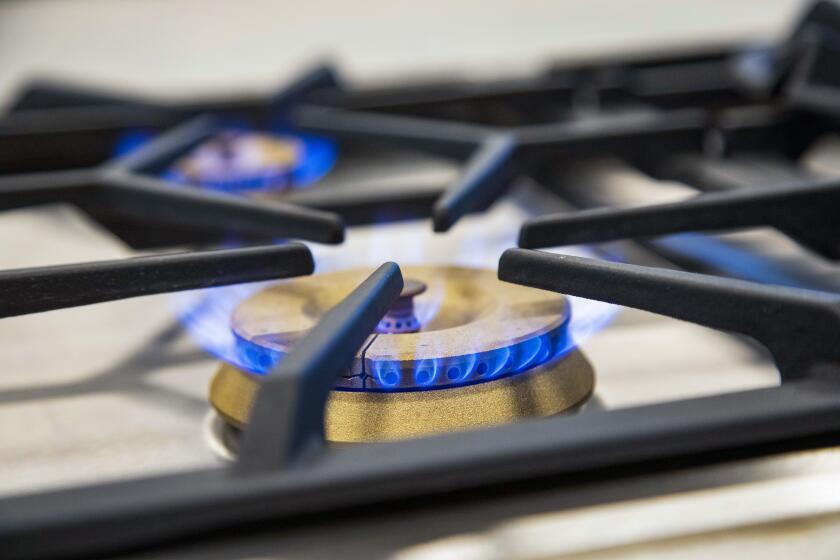Get ready for a massive SoCalGas bill this month, as natural gas prices soar

The warning Southern California Gas Co. issued to its customers was unusually blunt: “There’s no easy way to put this,” the company said. “January bills are likely to be shockingly high.”
Anyone who heats their home with natural gas is likely to see a January bill that is more than double what they paid a year earlier, SoCalGas said.
A typical peak monthly bill of $65 from last winter will probably come in close to $160, SoCalGas said, a 146% increase. A $130 bill will be more like $315, up 142%.
The increases result from the soaring wholesale price of natural gas paid by SoCalGas and passed through to its customers. That price, set by national and regional markets, rose 2 1/2 times over December’s price, and is up more than 300% from January 2022, according to SoCalGas.
(Since this story was first published, national market prices have dropped, but the effect on California wholesale prices and on the next round of Southern California customer gas bills is yet to be determined.)
Tom Cox of Westchester hasn’t yet received his January bill, but he’s anxious. He said his family works hard to conserve energy but saw their monthly bill shoot from $22.46 in November to $100.56 in December. For December of 2021, it was nearly half that, $56.96.
“Our bill is not high compared to what I’ve heard” others with bigger properties are paying, he said.
And it’s not just gas bills. Your electric bill will be going up too.
Southern California Edison said rates will rise 7.2% in January, mainly because of the rising price of natural gas. Natural gas is the source of about 22% of the company’s electricity, so when gas prices go up, electricity prices go up too.
With the cost of natural gas skyrocketing, utility bills in Southern California are going to jump. To help manage the costs, SoCalGas offers several programs.
Natural gas use in Southern California usually goes up during the winter months, as homes and businesses use gas for heating. January usually is the peak month.
Gas prices are jumping across the state. In the territory served by San Diego Gas & Electric Co., a household that paid a $105 bill last January will pay about $225 this month, the utility estimated. That’s an increase of 114%.
Edward Lopez, executive director of the San Diego-based Utility Consumers’ Action Network, said his organization started receiving complaints about higher gas bills before the holidays.
“If in fact SDG&E customers see that type of hike [in gas bills], that is just so unreasonable and so painful,” Lopez said. “It’s creating tough, tough choices for SDG&E customers in terms of not only how they pay their bill but making choices as to exactly what bills, including bills for other essential items, that they can afford to pay.”
SoCalGas and other utilities have attributed the sudden and dramatic surge in prices to unusually cold winter weather in California and the Pacific Northwest, which boosted demand for heat, as well as supply and distribution constraints.

The U.S. Energy Information Administration pointed to reduced capacity because of pipeline maintenance in West Texas that lowered westbound natural gas flows. The EIA reported that Pacific region natural gas storage inventories in December were 30% below the five-year average.
Some parts of the country more closely tied to pipeline distribution systems are seeing a decline in natural gas prices. So is Europe, whose winter is proving warmer than expected.
Although colder winters do cause price hikes, “[natural] gas prices don’t just double overnight because things got a little colder than last year,” said Jamie Court of Consumer Watchdog.
Court said prices are being pushed higher in part because of natural gas supply that has been shipped in the form of liquefied natural gas to Europe, which had been building stockpiles in the face of natural gas cutoffs from Russia since that country invaded Ukraine in February.
“This is about all the LNG we are exporting to Europe,” Court said. “They’re selling our natural gas to Europe because they get a higher price.” The resultant inventory shortages lead to higher prices for U.S. consumers, he said — and the companies can put on the squeeze because “consumers really need it.”
Although the broad reasons for the price hikes are easy to explain through supply and demand, the details on company pricing decisions are hard to come by — as was made clear in the aftermath of last summer’s sky-high gasoline prices. Gov. Gavin Newsom is pushing what’s become known as a “price gouge penalty” in the state Legislature that would, in effect, tax “excessive profits” at gasoline refineries.
A SoCalGas spokesperson noted that the company’s profit is limited through regulation, and the utility doesn’t benefit from higher wholesale prices. The wholesale — or commodity — price of natural gas accounts for more than 90% of the increase that utility customers pay.
SoCalGas and SDG&E are owned by energy giant Sempra, a big player in shipping LNG to Europe from the U.S.
California depends on other states for 90% of its natural gas, most of it from New Mexico, Wyoming, Texas and Alberta, Canada. Natural gas production in California continues to dwindle. Natural gas and oil production are tightly related, and oil production in California is about two-thirds of what it was in 1985.
To combat the emissions of greenhouse gases, California political leaders are aggressively moving the state away from fossil fuel production and consumption toward solar and wind power. The California Air Resources Board is planning to implement a ban on new natural gas heaters, water heaters and furnaces in the state by 2030. The Los Angeles City Council passed a similar measure last May.
That will reduce greenhouse emissions and alleviate indoor toxins from gas heaters and stoves. But that will further decrease natural gas drilling in California. And California policies are in effect forcing existing oil wells to shut down, said Kevin Slagle, spokesperson for the Western States Petroleum Assn. “With fewer wells, you have less production,” he said.
Although the nosebleed level of natural gas prices now may prove an anomaly, both the California Air Resources Board and the California Energy Commission expect average natural gas prices to trend higher at least through 2030.
Both agencies, along with the Public Utilities Commission, the governor, and the legislature, are struggling to transition away from fossil fuels without raising fossil fuel prices in the meantime so high that it provokes a public outcry.
The utilities commission “for some time now has tried to focus on trying to bring energy costs in line, make them much more affordable,” consumer advocate Lopez said. “But we still haven’t seen a significant difference yet.”
Mitchell is a Times staff writer. Nikolewski writes for the San Diego Union-Tribune.
More to Read
Inside the business of entertainment
The Wide Shot brings you news, analysis and insights on everything from streaming wars to production — and what it all means for the future.
You may occasionally receive promotional content from the Los Angeles Times.












